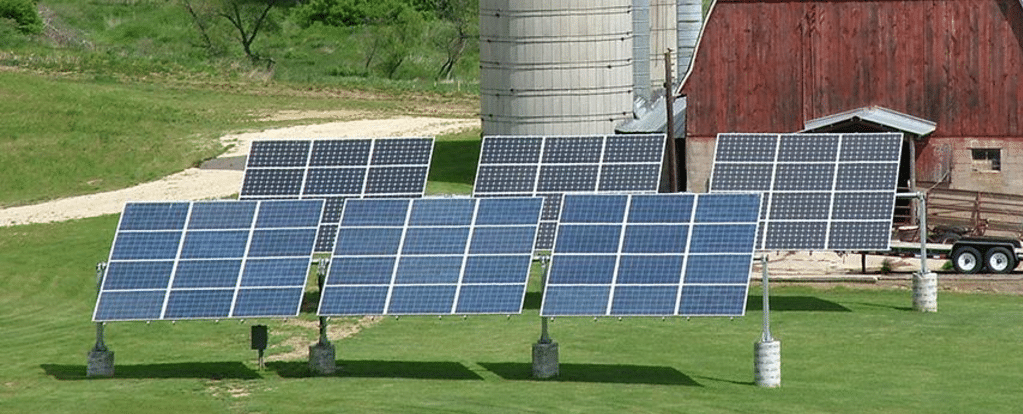The Great Recession of 2008 and 2009 could return with a vengeance at the end of this century if climate change is permitted to plow ahead unchecked in the U.S., finds a new research paper published in the journal Science by a trio of universities.
The research, which was led by the University of California, forecasts that with each 1 degree C temperature increase the U.S. economy will lose 1.2% GDP, on average. States in the south and lower mid-west will be impacted most severely, with the poorest areas of the country potentially seeing their incomes contract by as much as 20% from today’s levels.
The current trajectory and pace of climate change will essentially facilitate the greatest transfer of wealth from the U.S. poor to the U.S. rich in the nation’s history, warn the researchers. Southern regions will be more prone to drought, heatwaves, storms and crop failure, while parts of the Pacific northwest and New England – already the wealthiest parts of the country – will benefit from a short-term fillip in agriculture and even tourism as balmier conditions boost some crops, bring in extra investment and even reduce winter deaths.
However, any benefits will be short-lived, say the researchers, because unchecked climate change will trigger social upheaval within the U.S. on a scale never seen before. “We are finely balanced at the moment, but even areas that will do well end up being harmed if the world warms more severely,” said Robert Kopp, co-author of the report and professor of Earth and planetary sciences at Rutgers University. “That borderline of net harm marches northwards over the course of the century.”
The researchers examined 116 different climate projections, and ran through thousands of potential simulations designed to ascertain what could happen to the U.S. at various emission increase checkpoints. If little is done to tackle current carbon emissions, the scientists believe that the U.S. could be 10F (5C) warmer by 2100.
In the poorest third of the country, income levels could shrink 20% as the impacts on agriculture, coastal storms, energy use, climate-related deaths and crime, and disrupted working conditions take hold.
Texas, Georgia and Louisiana will fare particularly badly, but Kopp believes that Florida could well bear the brunt of the worst effects. “That state is home to a lot of the hardest-hit counties,” Kopp warned. “It is hot, there are plenty of old people there, and they will experience a lot of coastal flooding and storms.”
From an economic modeling standpoint, the impact of climate change will accelerate. At first, every 1C temperature rise will result in a 0.6% loss to GDP, climbing to 1.7% once the fifth degree (C) of warming is reached.
The US Environmental Protection Agency recently forecast that the country could be facing a $180 billion economic hole by 2100 due to drought and water shortages, while a 10F temperature increase would push the average US temperature above 55F – the threshold at which Stanford and Berkeley researchers have found countries begin to suffer economic shrinkage.
This content is protected by copyright and may not be reused. If you want to cooperate with us and would like to reuse some of our content, please contact: editors@pv-magazine.com.








Be careful what you wish for. The last glaciation had 2-mile THICK ice sheets covering much of North America continent and land is still rebounding from its meltdown 8,000 years ago.
Solar Panels are gonna’ do what, zackly?
Sea Levels have risen 145 meters (476 feet) since the last glacial minimum a mere 20,000 years ago.
https://en.wikipedia.org/wiki/Past_sea_level#/media/File%3APost-Glacial_Sea_Level.png
Anyone who thinks 155 years of real temperature measurement history can be stitched to gaseous isotope data from benthic foraminifera in core samples from lake beds, sea floors and ice cores hasn’t lived long enough to discover the multitude of variables shaping our 45-million foot diameter planet and its bodies of liquid or frozen fresh and salt water.
Solar panels and electric cars aren’t going to effect sea levels or land subsidence significantly at such scales of dimension and time.
Milankovitch cycles with 100-thousand year regularity determine earths elliptical orbit interaction with its rotational axis precession around the sun affecting seasonal maximum and minimum temperatures for thousands of years at a time in our northern and southern hemispheres. Nothing is going to change that either.
https://climate.nasa.gov/news/2948/milankovitch-orbital-cycles-and-their-role-in-earths-climate/#:~:text=The%20Milankovitch%20cycles%20include%3A,is%20pointed%2C%20known%20as%20precession.
NASA could easily convince our career politicians to fund $-billions for astronauts to put a thermostat on the sun.
And they’d believe it could be done safely by landing at night. 😄😊☺😉😜🤓